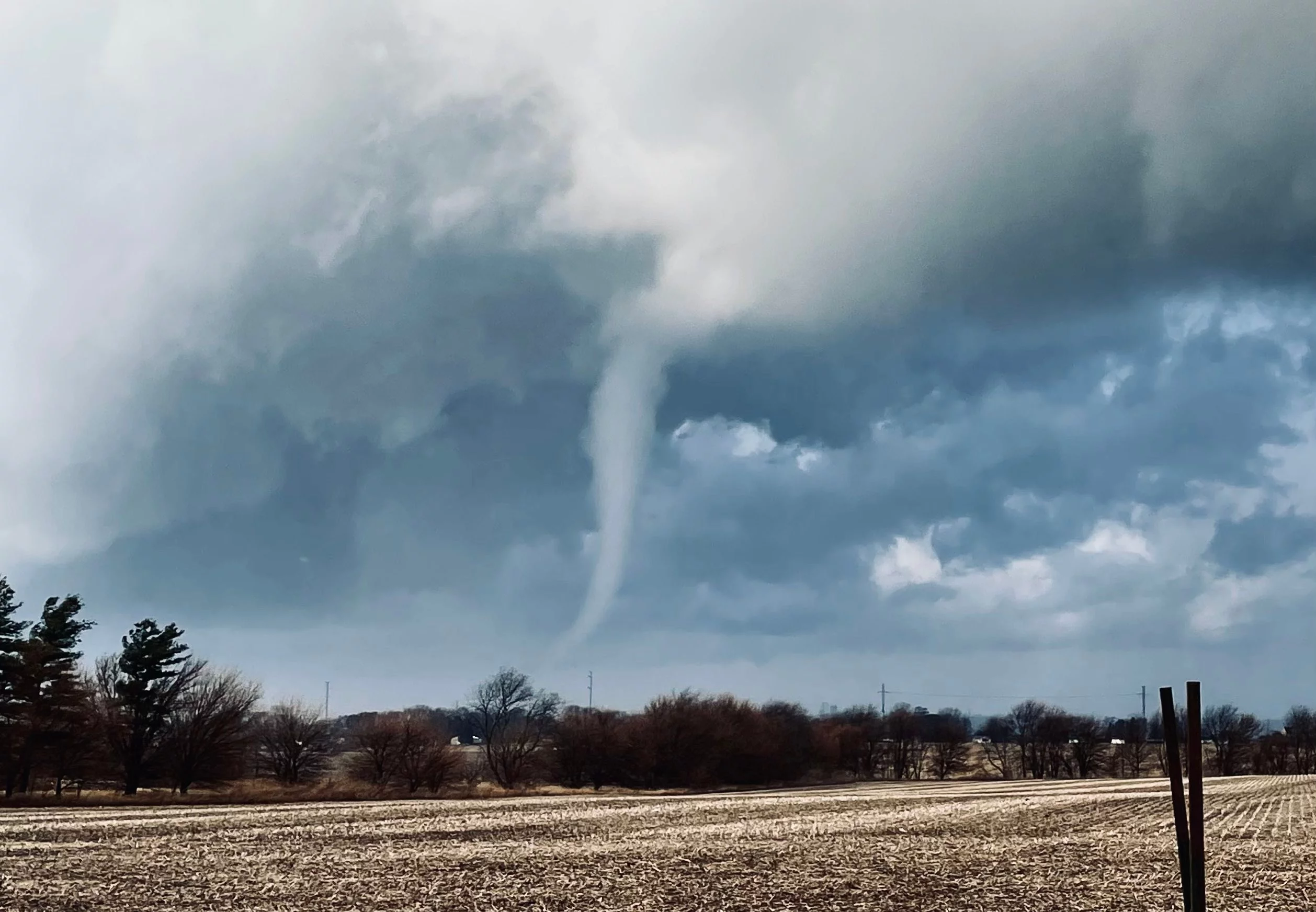The arrival of spring also signals the beginning of our severe weather season in East Central Illinois
The weather gods do not always adhere to the timetables of mere mortals. Surprise! A pair of tornadoes could touch down right outside the Champaign and Urbana city limits exactly like on the morning of Feb. 27, 2023, while people were arriving at work or school. Or ask the residents of Gifford, who saw hundreds of homes and businesses damaged or destroyed on Nov. 17, 2013, by an EF-3 tornado a half-mile wide.
More typically, however, tornadoes in Illinois tend to occur from April to June.
 The start of March — especially if it comes in “like a lion” — is a good time to educate our community’s newcomers about tornadoes and other severe weather events. In fact, the week of March 4-8 is designated as Severe Weather Preparedness Week in the state of Illinois. Even those of us who grew up in tornado country –anyone else suffer through tornado drills in school? protect your neck, children! — can use a refresher.
The start of March — especially if it comes in “like a lion” — is a good time to educate our community’s newcomers about tornadoes and other severe weather events. In fact, the week of March 4-8 is designated as Severe Weather Preparedness Week in the state of Illinois. Even those of us who grew up in tornado country –anyone else suffer through tornado drills in school? protect your neck, children! — can use a refresher.
Champaign-Urbana is not actually located in Tornado Alley. That unlucky and only vaguely defined area lies generally west of us and east of the Rocky Mountains. But the state of Illinois does experience an average of 53 tornadoes per year, according to the Illinois Emergency Management Agency.
For new area residents, we usually recommend buying a basic weather radio with battery backup. The local NOAA Weather Radio station broadcasts warnings, watches and forecasts from the National Weather Service, 24 hours a day, and the alarm function on the radio will wake up even the soundest sleepers when weather emergencies occur at night.
In recent years, Champaign’s NOAA station WXJ-76 has experienced prolonged outages (ironically usually due to weather damage). Note that other NOAA stations in nearby counties can provide residents of Champaign County with helpful weather information, but they do not broadcast alarms specific to Champaign County. So the best way to stay safe is to have multiple ways to receive weather alerts: most smartphones have severe weather alerts that can be enabled, or users can download additional apps, such as FEMA’s.
For more general storm preparedness, probably the most important piece of information for newcomers to keep straight is the difference between a weather watch and a weather warning.
- WATCH — the conditions are right to develop severe weather, and you should pay attention to official news sources to monitor any developments.
- WARNING — dangerous weather is imminent and heading toward you; you should take appropriate shelter as soon as possible.

Another helpful piece of information for newcomers? All municipalities in Illinois conduct a test of outdoor warning sirens on the first Tuesday of each month at 10 a.m., so don’t panic when you hear them then!
Remember that damaging weather can occur even when our local warning sirens are not sounded, and that these outdoor sirens are not designed to be heard inside buildings. That’s why weather radios and phone alerts are necessary as well.
Here are some Tornado Safety Tips from the National Weather Service:
- Best places to shelter from a tornado: in a substantial building away from windows and doors; in a basement away from windows; if no basement, on the lowest floor in a small interior room without windows. Put as many sturdy walls as possible between you and wind-driven debris.
- Leave a mobile home and seek a sturdy shelter elsewhere, well before the storm arrives.
- If outdoors, get in a car, buckle up, and try to drive to the closest sturdy structure. NEVER seek shelter under a bridge, and only lie flat in a ditch as a last resort.
To educate yourself in more detail about severe weather in Illinois — which includes severe thunderstorms, hail, lightning, high winds, and flooding as well as tornadoes — bookmark a helpful official source. Our favorite is the National Weather Service, both for its expertly vetted information as well as its cool infographics. You can follow the National Weather Service for Central Illinois (based in Lincoln) on social media for detailed and reliable forecasting and advice.

A pillar of the local weather scene is meteorologist Andrew Pritchard, who is the brains behind Chambana Weather (@chambanawx on Facebook and other social media). He provides a thorough, scientifically grounded and level-headed source of information about the fascinatingly varied weather we encounter year-round in East Central Illinois.
Stay safe everyone!
For more newcomer information check out Moving to the C-U Area.

